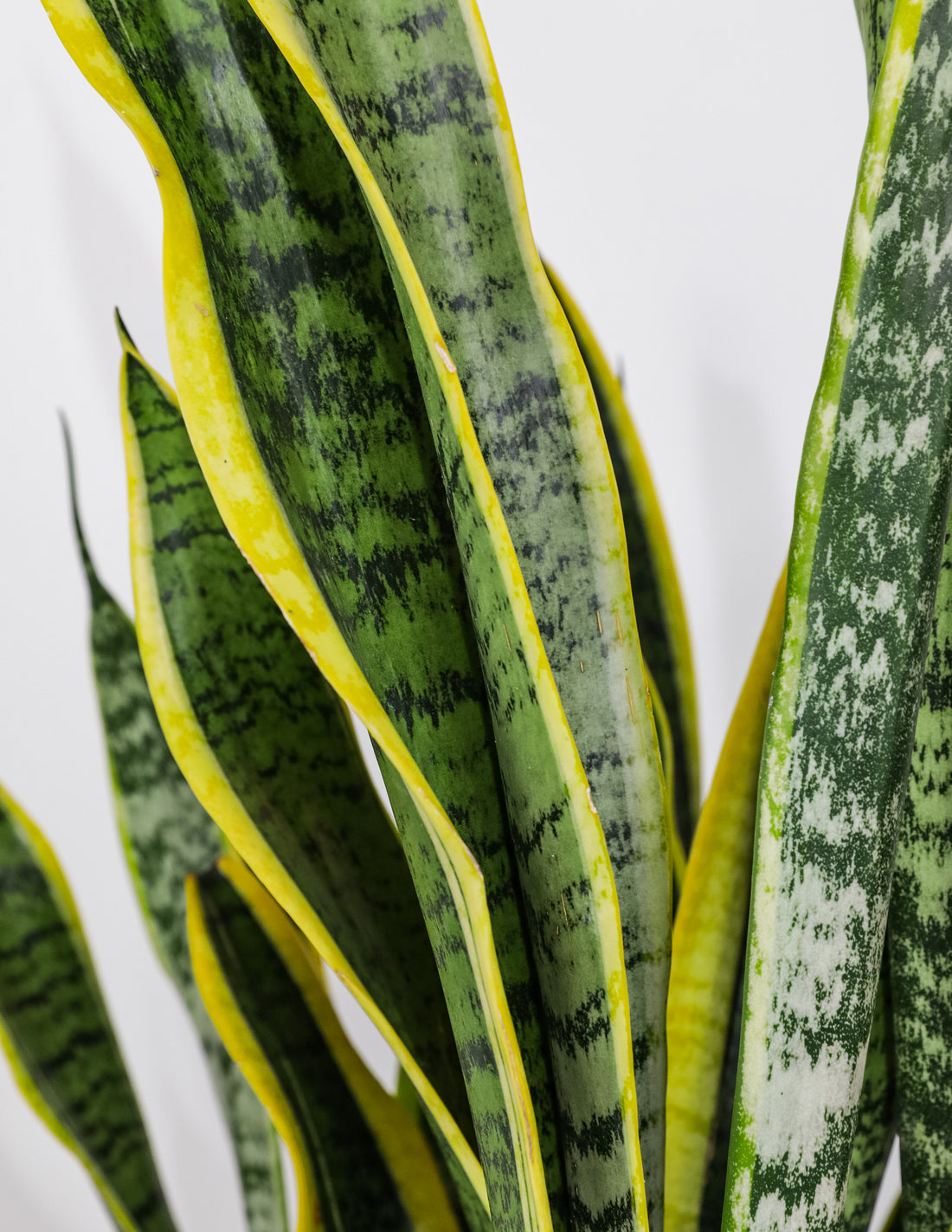7 Simple Techniques For Snake Plant Leaves Turning Yellow
Snake Plant Leaves Turning Yellow Can Be Fun For Everyone
Table of ContentsSnake Plant Leaves Turning Yellow Fundamentals ExplainedThe Buzz on Snake Plant Leaves Turning YellowThings about Snake Plant Leaves Turning YellowSnake Plant Leaves Turning Yellow - The Facts9 Easy Facts About Snake Plant Leaves Turning Yellow Described
Right here are 7 reasons your snake plant's fallen leaves might be transforming yellow and how to fix it. A number of different plant troubles can cause yellow leaves, or chlorosis. Chlorosis occurs when plants do not have the trace elements they need to produce chlorophyll, which makes vegetation eco-friendly and permits plants to transform sunshine right into food.Serpent plants are drought forgiving thanks to their succulent fallen leaves. These plants expand best in loose, well-drained dirt that's enabled to dry out entirely in between waterings and may only require water when monthly throughout winter. Overwatering can protect against roots from soaking up wetness and nutrients that the plant requires and can also create origin rot.
A potbound plant can not soak up nutrients from the soil. If your snake plant is jammed or outgrowing its pot, this might be the reason of yellow fallen leaves.
Make sure the plant has intense, indirect light and constantly cozy temperature levels, and water only as soon as the dirt has fully dried out. Watch out for problems and catch them early to keep your plant looking healthy and balanced and gorgeous.
A Biased View of Snake Plant Leaves Turning Yellow
If the fallen leaves on your snake plant are getting soft, it's normally a sign of excessive water. Serpent plants shop water in their fallen leaves and if they're overwatered, the leaves can become soft and mushy. If you think your serpent plant is being overwatered, allow the dirt to dry completely before watering once more.
Yes, some yellowing is regular and to be expected on older leaves, particularly as serpent plants age. If the plant is or else healthy and balanced and the leaves are only lightly yellowed then there is no cause for worry. Nonetheless, if the fallen leaves are considerably yellowed or if there are various other indicators of distress then it's ideal to act.
Dead fallen leaves can give a home for pests and conditions, which can after that infect the remainder of the plant. To get rid of a dead fallen leave, just suffice off at the base with a sharp blade or scissors. Make certain to decontaminate your reducing device in between cuts to protect against the spread of disease.
This can differ depending on the size of the pot, the sort of potting mix, and the temperature and humidity degrees. In general, serpent plants should be watered every one to two weeks. During the winter season months, you can minimize watering to when a month. Snake Plant Leaves Turning Yellow. If you assume your snake plant has been overwatered, the primary step is to stop sprinkling it.
Not known Details About Snake Plant Leaves Turning Yellow
With a little investigation, you should have the ability to find out the reason and take steps to fix the issue and have a healthy snake plant.
The serpent plant is a great houseplant. The serpent plant is one of those plants that are fantastic for expanding inside your home in a terrarium, Snake plants can expand rather huge, but they likewise often tend to be rather low-maintenance.
When the soil is overwatered, the plant cells take in even more water than they can save. Check out right here More about the author to Leaves come to be soggy and yellow as they soak up much more water. Sagging serpent plant fallen leaves are brought on by soaked-up leaf cells losing their firmness. You might see that your serpent plant will end up being black or brownish if the yellow patches are not corrected by dealing with overwatering.
It is, consequently, more probable that your plant will spot yellow patches on its fallen leaves if you overfeed it with fertilizer throughout winter months. The fallen leaves of snake plants are likewise at risk to yellowing when overfed, specifically if the origins are delicate. Repotting your yellowing, watering only when the dirt dries, and providing optimum temperature and light problems can save it.
Indicators on Snake Plant Leaves Turning Yellow You Need To Know

Your can be eliminated by cutting off the yellow tips. The pruned leaves should look at more info grow longer if they are watered properly and have ideal light and temperature conditions. It is essential to remember that the pointed pointers will certainly not regrow, causing them to stand apart from the rest of the leaves.
It won't take long for the leaves to grow back and expand like the healthy fallen leaves around them. At the same time, you can remove affected fallen leaves from the base of the plant. The suggests that it's obtaining way too much or as well little light or nutrients. The essential message is to allow the serpent plant time to recoup.

Not known Facts About Snake Plant Leaves Turning Yellow
Some of the most usual reasons are provided below (Snake Plant Home Page Leaves Turning Yellow). Sansevierias like completely dry climates and choose little water kept at a space of when or twice once a week in summer and monthly in winter. But when the water dosage gets out of control, your Sansevieria will certainly suffer from overwatering. The most common problem provided by overwatering is origin rot leading to mushy origins and stems with a foul smell.